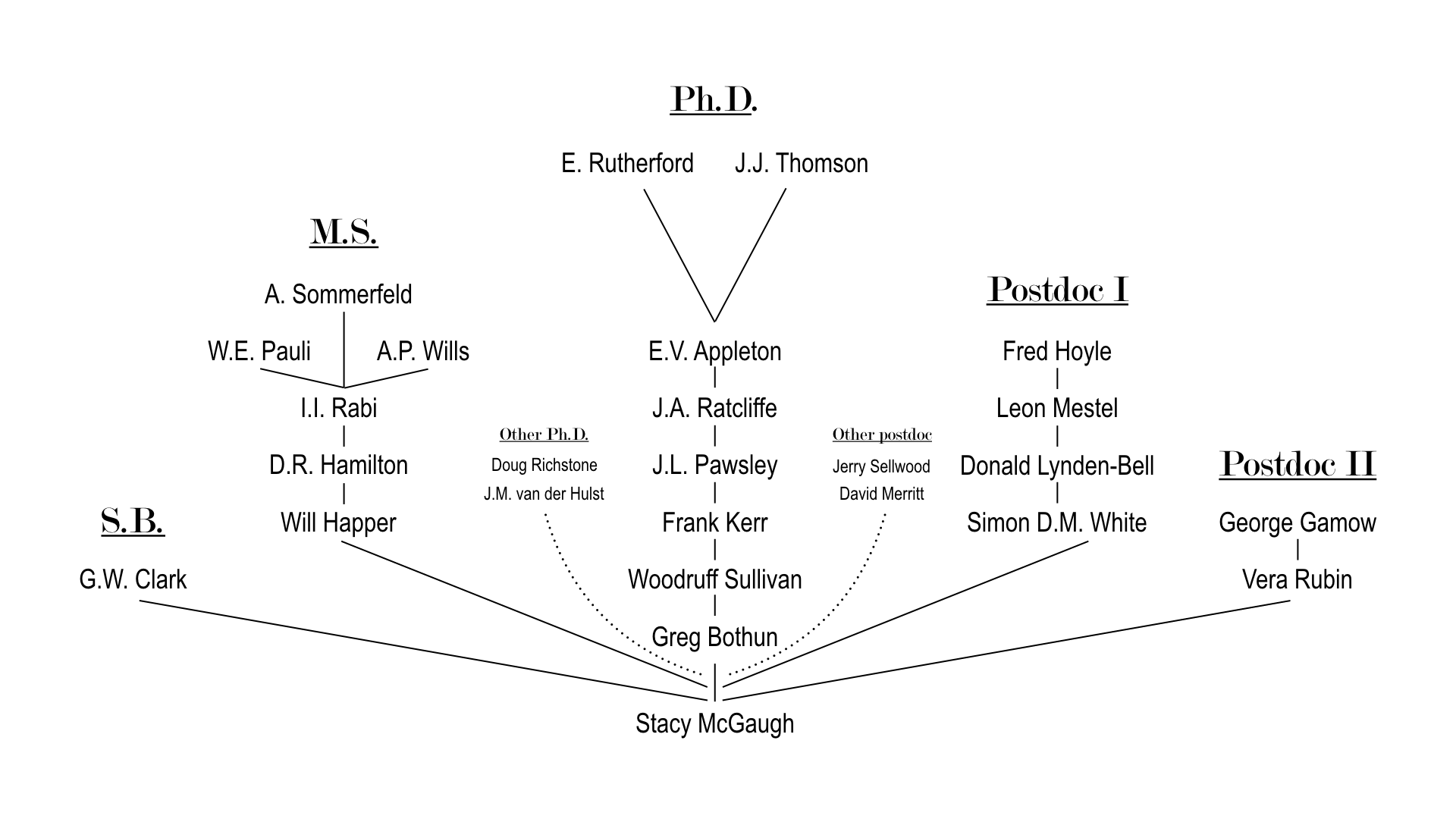
So naturally I put in my own name. The result:

This is nice as it contains information I did not know. I've never interacted with Sullivan, but Frank Kerr was emeritus faculty at the University of Maryland when I was junior faculty there. We had some good conversations, but I had no idea that we were "related" in this way. The timing of this discovery is also a curious coincidence, as I just wrote a paper on the Milky Way, Kerr's primary interest. All great astronomers eventually write a substantial yet flawed paper on the Milky Way, whether they want to or not.
Nevertheless, this "line of descent" is underwhelming. It isn't a tree so much as a twig. Worse, it does not represent the many, many lines of influence I've been fortunate to experience in my career. How could it? This is information that can't be scraped out of the web in an automated fashion.
So I decided to take a moment to reflect on the important influences in my scientific career. This can never be a complete list: as I noted already in my dissertation, it takes a village (and then some) to raise a Ph.D. So I've organized it in a similar fashion, but also tracing advisors and mentors at both the pre*- and post- Ph.D. level. Then I used PhDTree to trace back their "ancestry." The result:

This gives a rather different impression. It is much more fleshed out, but still incomplete. For example, both Donald Lynden-Bell and Simon White were important influences when I was a postdoc at Cambridge (as were many other people!) but that is the only case where my direct interaction extends more than one step up the tree. Indeed, this completely misses peer-level intereactions; influences within the cohort of scientists of the same generation are at least as important as this so-called line of descent, and probably more so.
Some of these trees are obviously incomplete, whereas others are very detailed (and somewhat incestuous - try tracing Fred Hoyle's tree!). I've therefore also included a few other important influences, both before and after the Ph.D. Again, a very incomplete list, though it may amuse some to realize that Richstone and Merritt are "brothers" descended from the same prolific Ph.D. advisor. If one imagines tracing the same sort of non-monolithic tree for each name here, it quickly becomes a very tangled bush.
More importantly, following up some of these lines of descent (with many common or overlapping origins) drives home that science is a human endeavor. It is composed of a large yet very finite human population. So far, that population remains fairly specific to a narrow if growing portion of human history and geography.